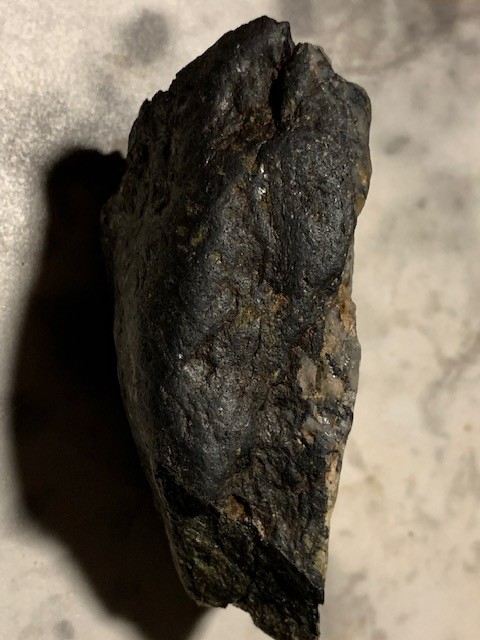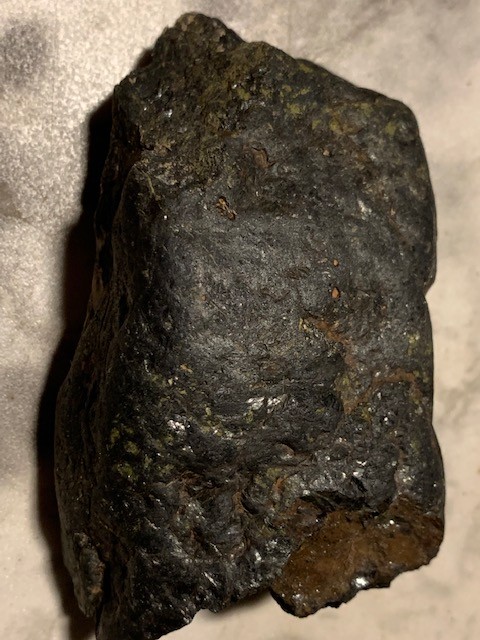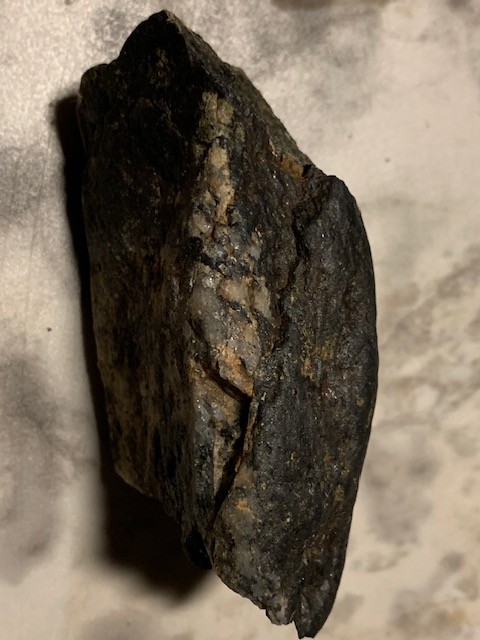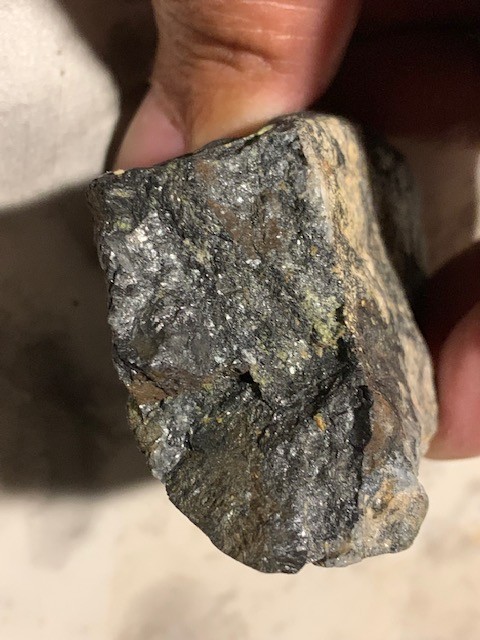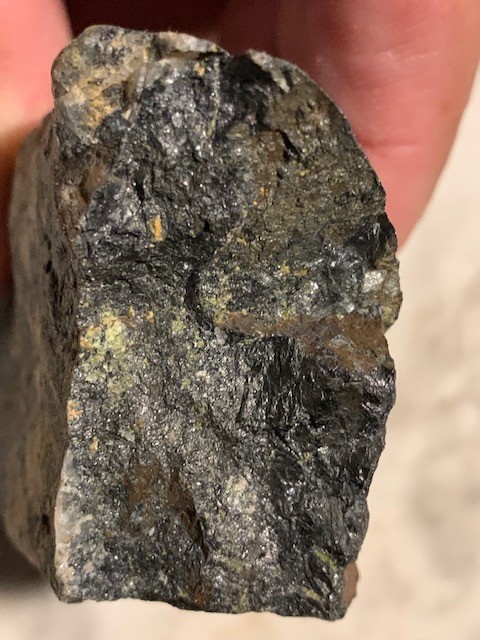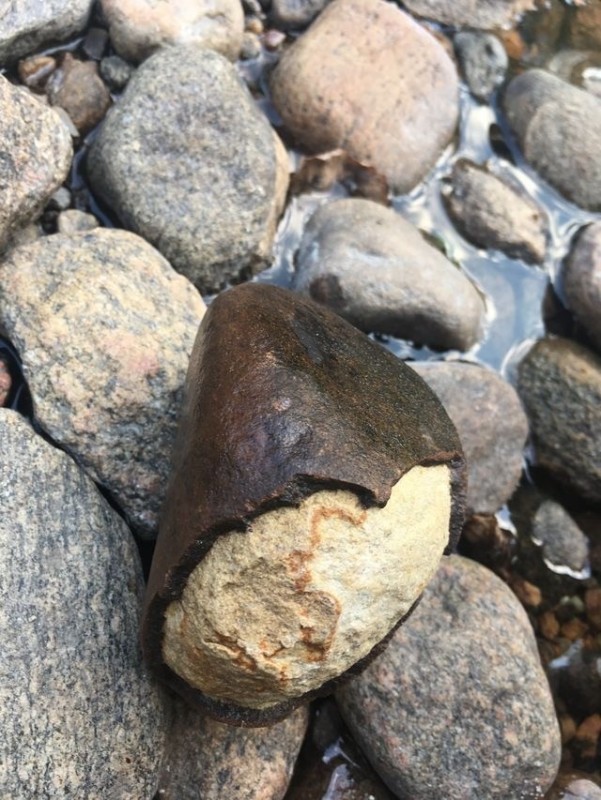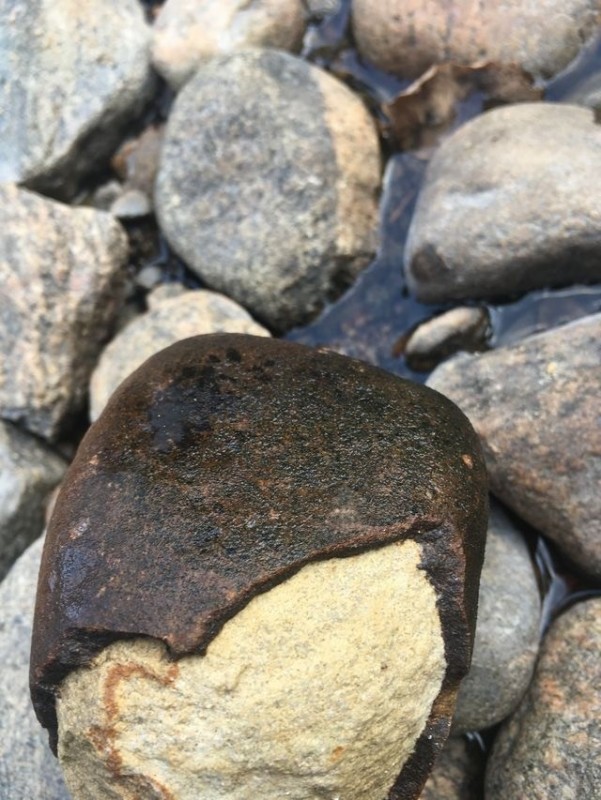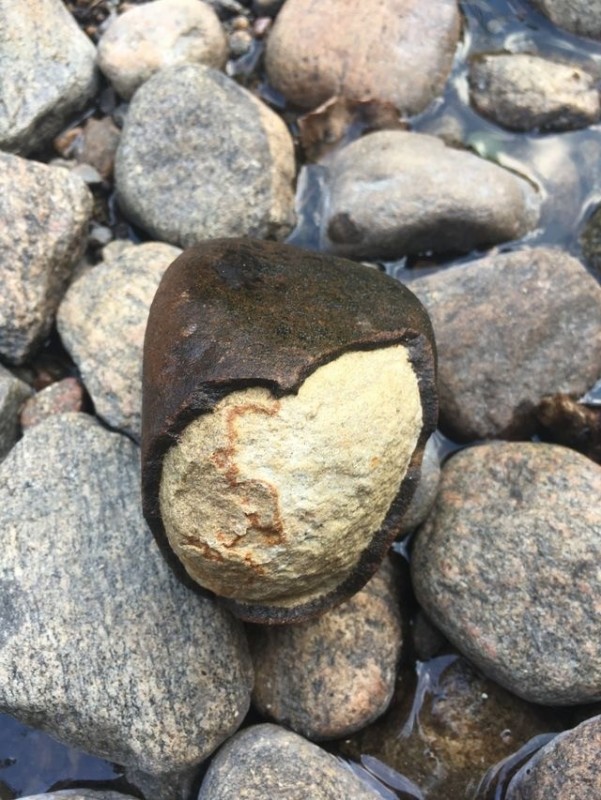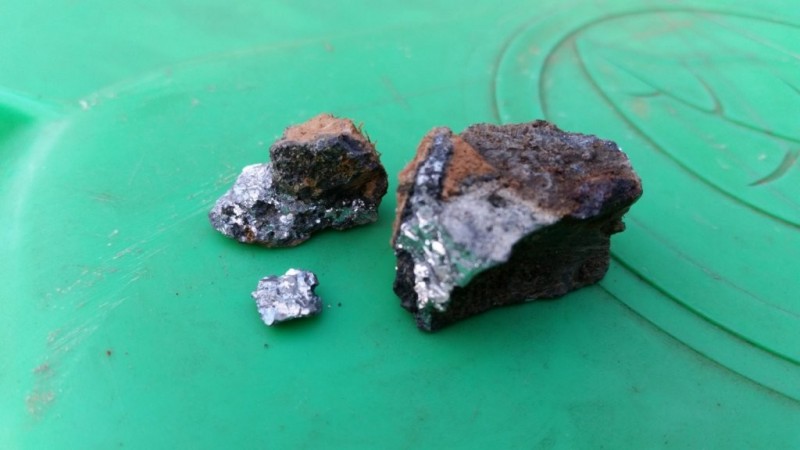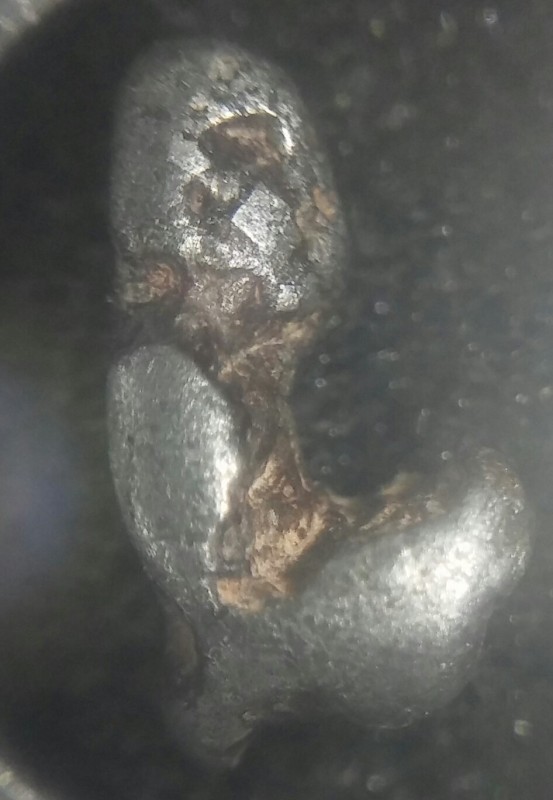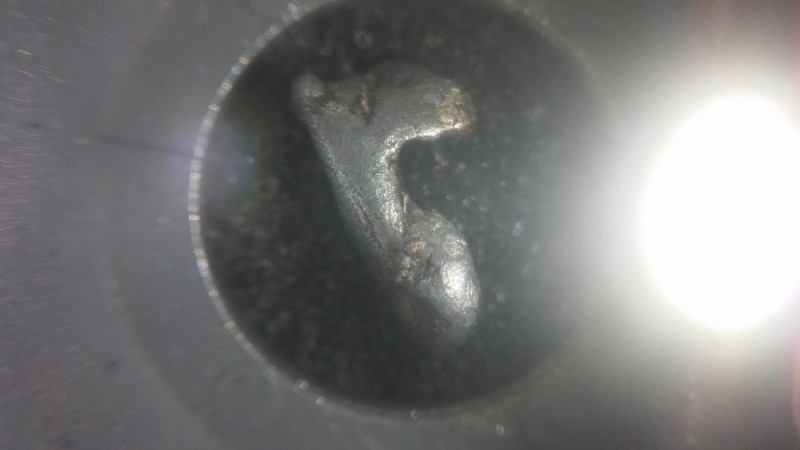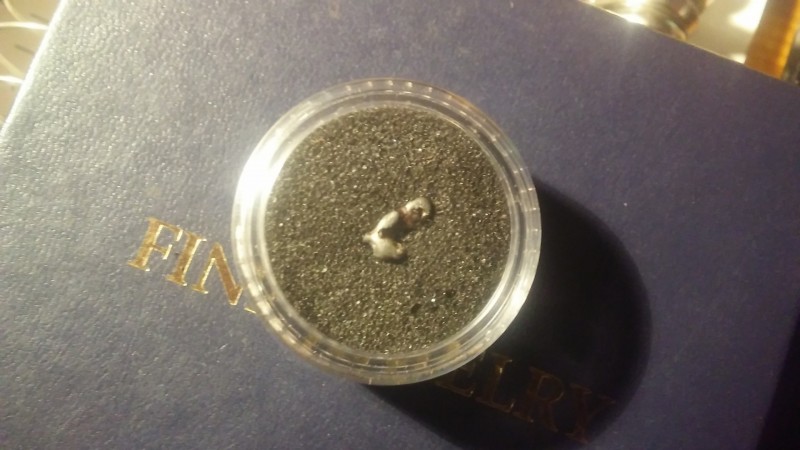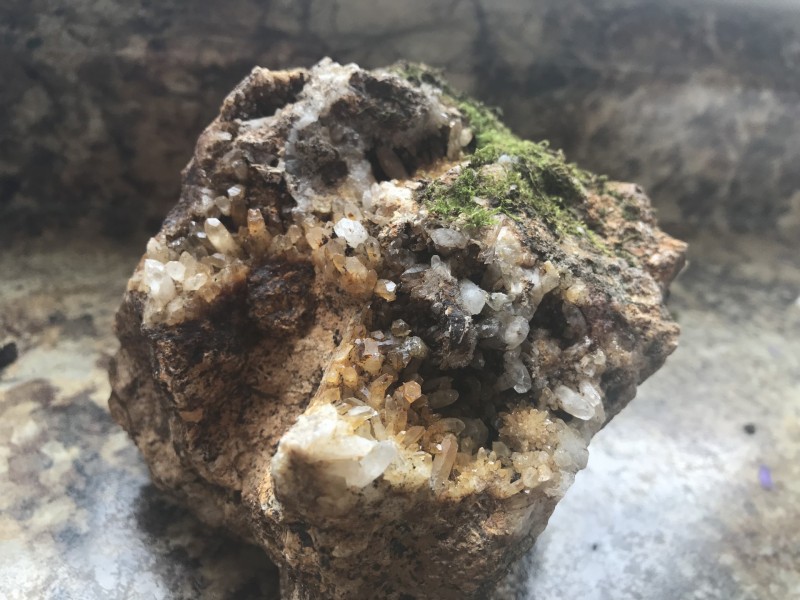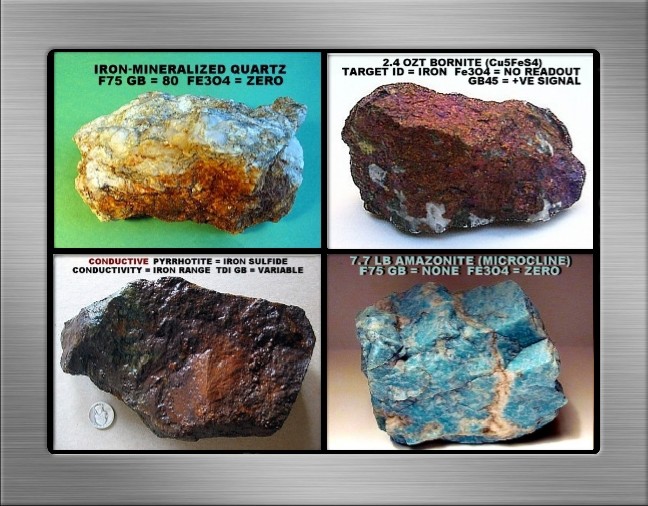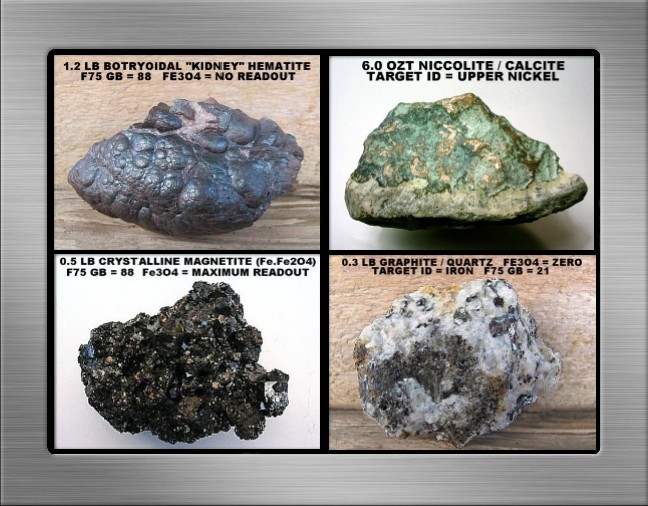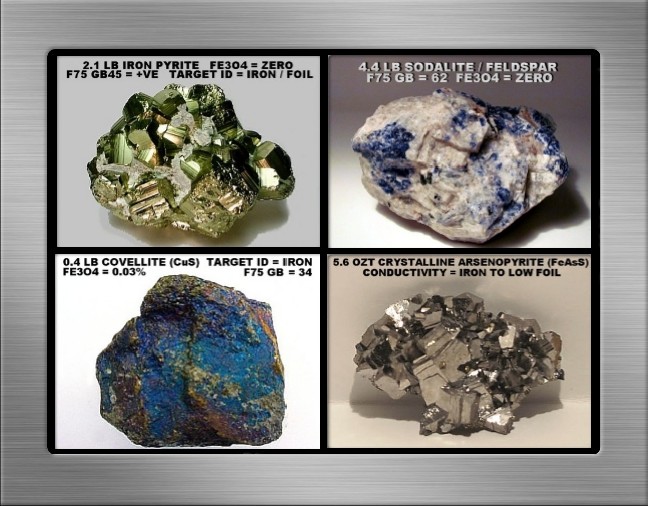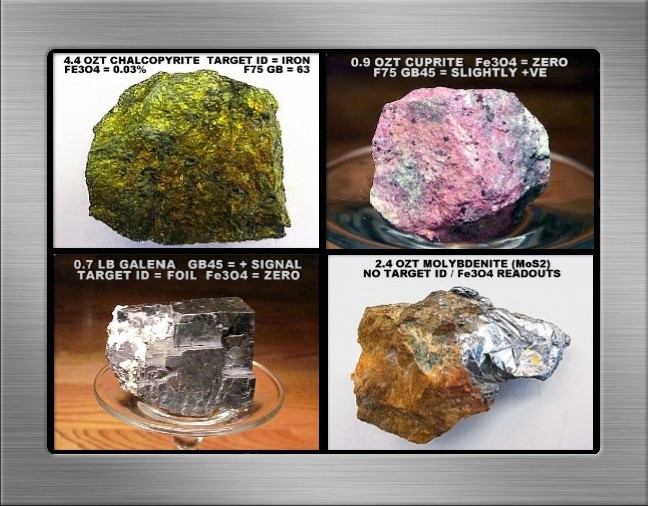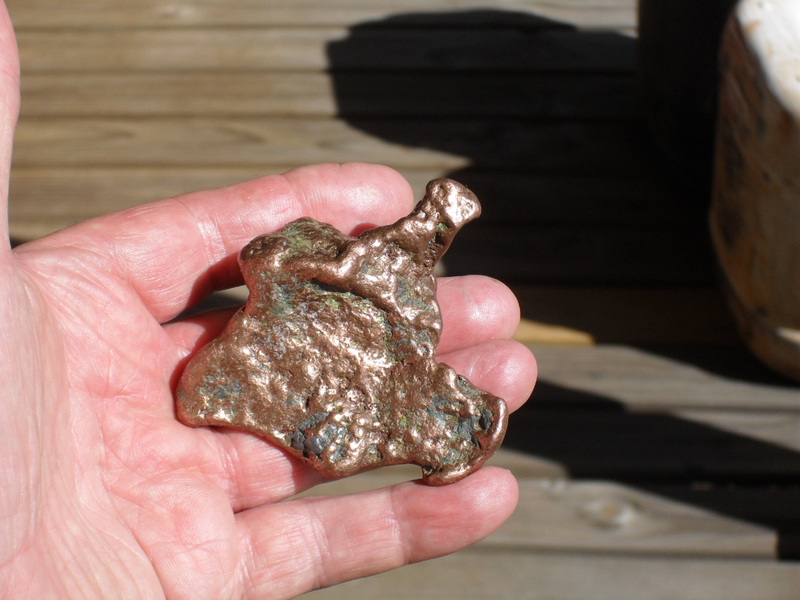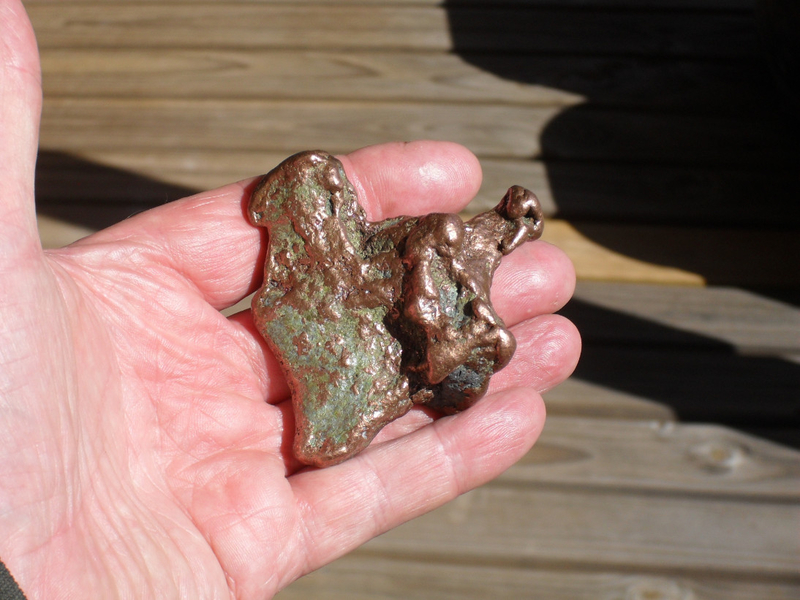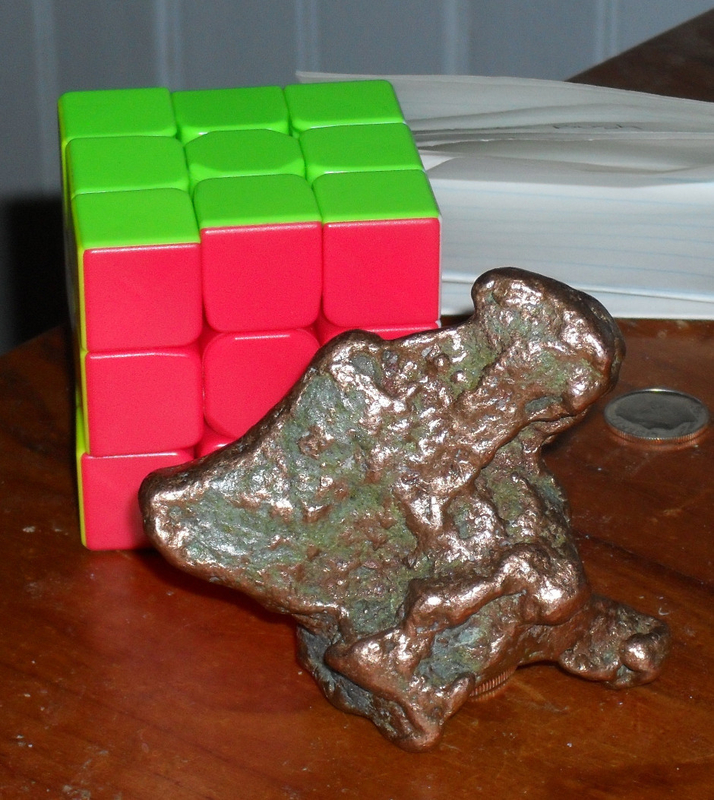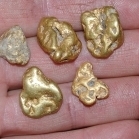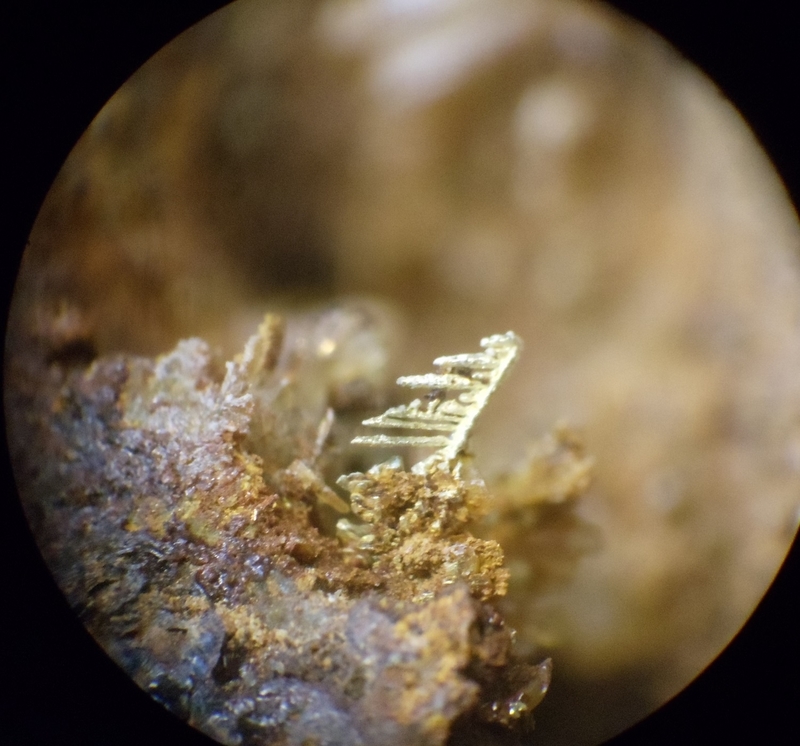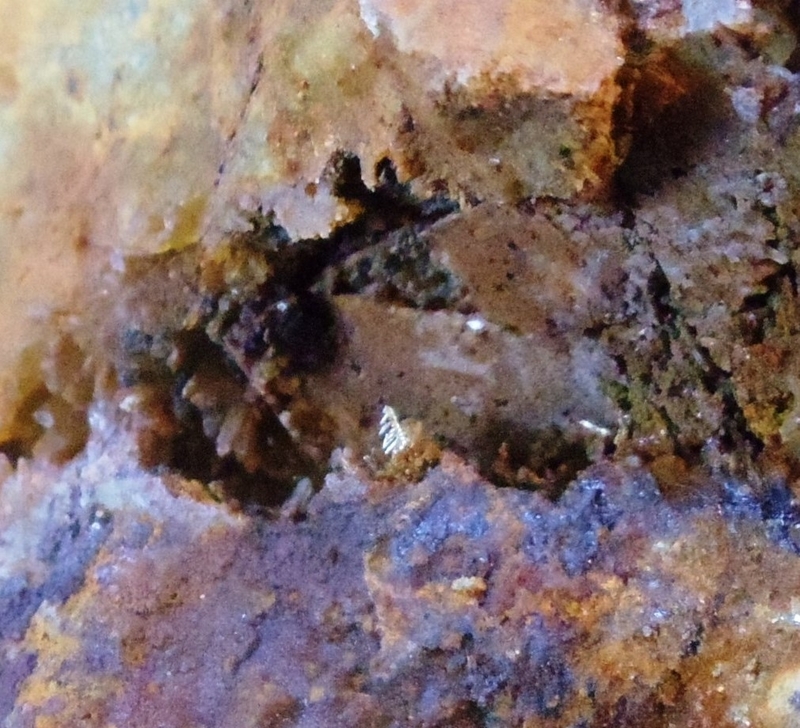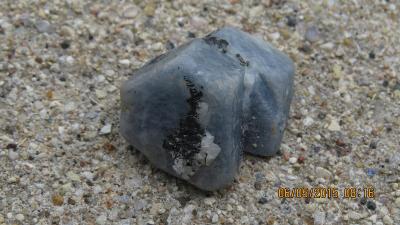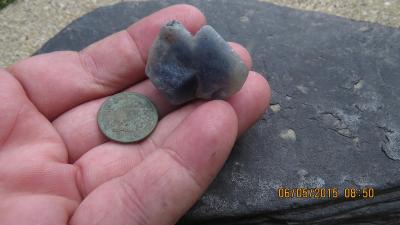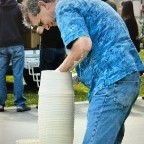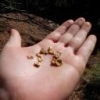Search the Community
Showing results for tags 'minerals rocks gems'.
-
Well I was out today in a remote locating looking for nuggets with my 2300 and it sounded off on this rock. The area is noted for a lot silver. Not saying it is silver only my PI machine is pretty quiet unless it hits some kind of metal. It was lying on top the ground. It's dark gray to black. Maybe Hematite. Any one no for sure looking at a picture? Has some quarts in it also.
-
Hi all! Found this rock by a river last summer.. anyone knows what it might be? Looks like a rock inside a rock ? Curious for any answer.
-
any idea what the material / mineral it is? it`s very shiny, the green reflections are from the plastic lid i had them sitting on
-
I found this nugget in the clark fork river in some exposed bedrock with one of my gold detectors. I always assumed it was lead, but after taking close up photographs, I'm not so sure. Any help identifying it would be appreciated. Thank you
-
“A rare pink diamond has fetched SFr50.3 million ($50m; £38.5m) at auction, a record price per carat. Pink Legacy, weighing in at just under 19 carats, was bought by US brand Harry Winston at auction in Geneva. The price of around $2.6m per carat marked a world record for a pink diamond, according to the Europe head of auction house Christie's. It had been valued at between $30-$50 million before sale, and was bought after only five minutes of bidding. The diamond's new owners have rechristened it the Winston Pink Legacy.” See the full article for more details and great photos
-
Hello guys, new to this site and gold prospecting itself. On my days off i hit the mountains with my metal detector. Dug this rock up, it was hot. Anyway to tell if its the real deal?
-
Sometimes you go out looking for gold and come home with other treasures! I just happened to stumble on a bunch of this stuff when I was bent over trying to catch my breath near the top of a local peak.
-
Can a vlf or pi machine detect gold telluride? Does the gold telluride have to be in large concentration in a specimen for a detector to be able to detect it? Could a Falcon Gold probe detect a gold telluride specimen? Thanks! for any information or tips you can provide.
-
Benchtesting Rocks & Minerals with an F75 Metal Detector Introduction From the earliest time when we were aware of our surroundings, most of us looked for pretty rocks. We wondered what interesting or valuable minerals might possibly comprise them. Now as adult hobbyists, I doubt if any of us hasn’t benchtested an interesting rock from curiosity, and wondered what actually produced the signal. Although a sensitive benchtest usually has little in common with how marginally conductive rocks and minerals respond to metal detectors in the field due to ground effects, we can learn and become familiar with how rocks and minerals in our respective areas respond to metal detectors in a benchtest. A sensitive metal detector’s electromagnetic field penetrates rocks, usually generating either a positive or a negative signal in response to whatever material is in the rock. We can sometimes determine whether such signals should be investigated further, or whether worthless iron minerals produced them. I’d generally describe my benchtest results as worthwhile and informative, but that notwithstanding, I look forward to doing a benchtest because I think it is an intriguing study on its own merit. That said, how do you conduct a benchtest? I’ll describe my methods and hopefully we’ll see what you think about it. Benchtest Requirements and Techniques Benchtesting ideally requires a visually displayed, fully calibrated, manually adjustable ground balance that covers the entire (soil) mineral range from salt to ferrite. As a minimum, the detector should feature a threshold-based true motion all-metal mode, and preferably an additional true non-motion all-metal mode for significantly improved sensitivity to borderline samples. Visual displays in either of the true all-metal modes are essential for target ID, Fe3O4 magnetic susceptibility and GB readouts. I prefer a small (concentric) coil to promote detector stability and improve sensitivity to the rock sample, to ensure uniform sample exposure to the coil, and to minimize EMI (electromagnetic interference) especially if benchtesting at home. Elevate the sensitivity control as high as possible while maintaining reasonable detector stability such that you can clearly hear changes to the threshold. To check for a target ID, move the sample back and forth across the coil at a distance that produces the best signal but does not overload the coil. To determine ground balance and Fe3O4 readouts, advance the sample toward the coil, back and forth to within an inch or two (depending on sample size and signal strength) of the coil’s electrical sweetspot. Ensure your hand does not come within detection range of the coil to avoid creating false signals. If you extend your fingers to hold the sample, this is not an issue when testing larger samples. If necessary use a plastic or wood food holder that can firmly grasp small samples. Benchtests should be conducted utilizing a minimum of two widely diverse GB control adjustments. Initially I prefer the same GB control adjustment that is typically required to keep my detector ground-balanced to the substrates in my prospecting areas. It’s a personal preference that works for me. That particular GB control point (F75 / GB86) is more likely to improve any rock or mineral sample’s signal strength compared to using a more reduced (more conductive) GB compensation point. The next step is to use a dramatically reduced GB control adjustment (F75 / GB45) as suggested by Fisher Research Engineering. This setting ensures that (obviously weathered) oxidized samples do not generate a positive signal from any type of non-conductive iron mineral inclusions, particularly maghemite mineralization that may be present within such rocks. It follows that this second benchtest will, if anything, slightly subtract from the sample signal strength, particularly with low grade and otherwise marginally conductive samples, compared to the first step of the benchtest at GB86. As a general rule, I do not recommend the F75 / GB45 compensation point for benchtesting (non-oxidized) mafic samples that are dominated by constituents such as common magnetite or other black minerals that normally support highly (non-conductive) elevated GB readouts. Such samples can produce strong negative threshold responses at the reduced GB compensation point. It will be difficult or impossible for the signal from a marginally conductive substance to successfully compete with those negative threshold signals. For non-oxidized samples Fisher Research Engineering suggests using F75 / GB65 rather than the F75 / GB45 compensation point, since obvious iron mineral oxidation should visually be absent from such samples. With the above discussion in mind, extremely fine-grained, unweathered magnetite that occurs in pyroclastic material (for example volcanic ash) can drop into the GB45 range, but it is extremely rare. Unweathered volcanics do frequently drop into the GB70's due to submicron magnetite, but the recommended F75 / GB65 compensation point will eliminate those positive signals. The arsenopyrite sample depicted above is a good example of a commonplace mineral that we encounter in the silverfields of northeastern Ontario. Generally field examples could be described as marginally conductive and many are low-grade. A good many react with only a mild positive signal, and sometimes not at all to a benchtest depending on which GB compensation point is used. The high-grade, solidly structured sample above produces a strong positive signal in either zero discrimination or true motion all-metal mode with the ground balance control adjusted to the GB compensation point required for our moderately high mineralized soils. As noted, that’s approximately F75 / GB86, although in the field, of course, it varies somewhat depending on location and coil type / size employed. The response is not as strong as a similar size and shape metalliferous sample would produce, but it does generate a surprisingly strong benchtest signal that would be readily detectable in the field. Even with the GB control dramatically reduced to more conductive values (F75 / GB45), to ensure that any positive signals produced by non-conductive iron mineral inclusions should now only produce a negative threshold signal, it is no surprise that this (non-oxidized) specimen continues to generate a strong signal. For those readers unfamiliar with detector responses to such minerals, the same general response scenario described above with arsenopyrite applies to other marginally conductive minerals such as galena, pyrrhotite and to a lesser extent even iron pyrites. Ordinary iron pyrites is generally innocuous, but maghemitized pyrite, pyrrhotite, and the copper sulfide ores, particularly bornite and chalcocite, can be a real nuisance in the field due to magnetic susceptibility, magnetic viscosity, and / or electrical conductivity, just depending on what minerals are involved. Such variable responses from arsenopyrite and many other mineral and metalliferous examples clearly infer that signal strength and potential target ID depends on a sample’s physical and chemical characteristics, including the quantity of material within a given rock. These factors include structure, size, shape, purity (overall grade), and magnetic susceptible strength of iron mineral inclusions. Moreover, the VLF detector’s sensitivity, the GB compensation points employed, the coil type and size, and the sample profile presented to the coil further influence benchtest target signal strength and / or potential target ID readouts. Incidentally, neither of my PI units will respond to the arsenopyrite sample depicted above, even with a TDI Pro equipped with a small round 5” mono coil, the GB control turned off, and a 10 usec pulse delay to deliver its most sensitive detection capability. That result is typical of most, but certainly not all sulfides and arsenides that occur in my areas. Higher grade and solidly structured pyrrhotite, an unwelcome nuisance iron sulfide, and collectible niccolite, a nickel arsenide, are commonplace mineral occurrences here that do respond strongly to PI units, although their respective VLF target ID ranges are quite different. As a related but slight diversion, the photo below depicts a handsome example of the widely occurring mineral sphalerite. It forms in both sedimentary beds, and in low temperature ore veins. It is interesting to collectors because it possesses a dodecahedral cleavage which means that it breaks smoothly in twelve directions, and it is usually triboluminescent, meaning that it gives off a flash of light when struck sharply. Like many desirable minerals lurking in prospecting country, unfortunately sphalerite doesn’t react to metal detectors. A Final Word The foregoing is intended to illustrate that sensitive metal detectors can be utilized as a supplementary tool to assist with evaluating rocks and minerals. There is no question that the benchtest has serious limitations, particularly if trying to distinguish positive signals produced by some types of iron mineral inclusions from weak conductive signals. That notwithstanding, a positive signal that persists below the F75 / GB45 compensation point cannot be confused with iron mineral negative threshold signals produced at that same compensation point. Therefore a positive signal merits further investigation. Such signals are almost certain to be generated by a marginally conductive mineral or a metalliferous substance. On the more interpretive side of a benchtest, we need to point out that weak positive signals from lower-grade samples of minerals such as arsenopyrite, galena, pyrrhotite, chalcopyrite, and doubtless a few others, may disappear well before the GB control is reduced to the F75 / GB45 compensation point. We learn early that benchtests are frequently equivocal and require interpretation based on any further evidence that might support the benchtest result. Look for iron oxidation in addition to structural or other physical evidence as described above that could explain why a sample reacts as it does to a metal detector. Jim.
-
I bought another Michigan copper nugget the other day. I love this kind of stuff. This one goes 235 grams. 7½ ounces feels really nice in your hand
-
Good article and photos.... https://www.usatoday.com/story/money/2018/02/12/how-one-african-mine-produced-nearly-1-000-carat-diamond-stunner/319678002/
-
A couple of my finds from this summer, a tube shaped piece filled with quartz and calcite and an ammonite with and without shortwave light Both about 8"
-

Know Your Rocks Or Miss The Golden Dagger
Gerry in Idaho posted a topic in Detector Prospector Forum
Know your Rocks. This highly desired collectors piece was found by one of my customers with a Fisher Gold Bug-2. If you did not know what to look for you'd probably toss the rock aside thinking "just another iron stone hot rock". When you see a good variety of colors and minerals, its time to slow down. Here is a 1 of a kind tree shape gold specimen or Dagger. Thanks to my customers for sharing your photos of Success with me. -
A California woman says she found a 1½ carat diamond while mining gold near the Sierra Nevada foothills town of Foresthill. “I was like ‘Oh, my god, I found a diamond,’ ” said Jillian Kelly. Kelly, 49, left her Silicon Valley career to take up mining 10 years ago and wrote ‘The Miracle Miner: My Life as a Female Gold Miner.” The uncut semi-clear pebble-sized stone is about width of a dainty pinky finger. The rest of the story with photos at The Sacramento Bee
-
I found this rock while gold dredging last year in Indiana in a gravel bar. I didn't realize until a month ago,it is a crystal of sorts ,white and dark blue and a black splotch ? It is a double crystal,Indian head penny for size comparison against a chunk of coal I found in another creek. Have been told it might be a Blue Sapphire crystal or Blue Beryl Crystal? Maybe Chris Ralph will know the answer? Dunno how it got into an Indiana gravel bar tho? Brought down by the glaciers with the gold from Lake Superior area perhaps? There was a pile of fine gold in the gravels on an inside bend of this 15 foot wide creek and numerous pretty rocks. I busted one open today and it is a Pink/white quartz inside. I guess it pays to eyeball a bit when gold hunting...I wonder if my crystal could be made into a ring or something? Just measured a bit. The top layer is approx. 3/4 inch across the parallel flats and 5/8 inch thick. If its a sapphire, how many carats might it weigh? Should I take it to a jeweler? -Tom
-
Found a copper ore nodule scanning some mine tailings in n Nevada, 94 on the Deus and very heavy. XRF readings at the local pawn shop were; Fe 1.53%, Zn 27.37%, Sn .632%, Cu 67.68%, Pb 2.37%. Sure wish there was a little Au in there, next time I wish. Or, could this just be a melted fitting buried in the tailing pile way in the desert high on the side of a hill?
-
Some nice fossils, minerals and gems. http://www.bonhams.com/auctions/24039/?utm_source=bonhams&utm_medium=email&utm_campaign=STS_Lapidary_24039&utm_content=link3
-
Can you recommend any places that would be good in Alaska. I think copper is much prettier than any other metal, having a few nuggets to put in the display would be neat! Years ago I found a small copper nugget about the size of a 22 bullet at Matanuska glacier, sure liked that little nugget. Ended up putting it in a small vial of gold, Sometime later I sold a spiral panner to a lady with a handicapped son. He really liked prospecting and she thought it was really helping him with his disability. She told me they were not having good luck finding gold and didn't know the difference between gold and fools gold. Well I marched rite into the house grabbed a vile of gold and gave it to her! She really appreciated that and I felt good about myself until I realized that 1/4 oz of gold also had that little copper nugget in it. Still irritated about that!
-
A CONTRIBUTION TO ECONOMIC GEOLOGY (1957) GEM STONES OF THE UNITED STATES By Dorothy M. Schlegel ABSTRACT Many semiprecious, but few precious, gem stones have been found in the United States. Beauty, durability, and rarity are the most important qualities of a precious gem. Gem stones are distinguished by their physical properties: color, crystal form, cleavage, parting, hardness, specific gravity, luster, index of refraction, transparency, and dispersion. Gems are named for their color, type locality, outstanding physical property, or persons. The most popular gem cuts are the cabochon, rose, brilliant, step, and mixed. The carat, one-fifth of a gram or 200 milligrams, is the unit of weight measurement. The color of four popular gems may be changed by heat treatment or dyeing. Only the ruby, sapphire, spinel, emerald, rutile, and quartz of gem quality have been synthesized. The best quality of assembled stones are the doublet and triplet. Most gem stones are found in alluvial gravels and igneous rocks, especially granite and pegmatite deposits. INTRODUCTION Gem stones generally are divided into two categories: precious and semiprecious. A precious gem stone has beauty, durability, and rarity, whereas a semiprecious gem stone has only one or two of these qualities. The diamond, emerald, ruby, and sapphire are considered precious gems. Some opal is precious, but most varieties are semiprecious. The beauty of a gem stone is determined by personal taste. In ancient times man preferred brightly colored, translucent or opaque stones. Today he prefers evenly tinted, transparent stones. The desired hues are blue, rose, green, and true canary yellow in the diamond; pigeon-blood red in the ruby; cornflower blue in the sapphire; and grass green in the emerald. Most diamonds, however, are colorless. The durability of a gem stone depends upon its hardness and lack of ready cleavage. A gem must be sufficiently hard to resist abrasion by objects normally found in everyday life and by dust. It should also resist the chemicals with which it comes in contact. Cleavability is the tendency of certain gems to split in one direction more readily than in another. Rarity is one of the most important factors in establishing the price of a gem stone. Such gems as the diamond and ruby are rare, in addition to being beautiful and durable, and therefore are very expensive. Although the deep red pyrope garnet closely resembles the ruby in color, there is no comparison in expense and popularity. The purpose of this report is to give the amateur gemmologist some of the important information available on the gem stones of the United States. Although the finest precious gems occur in foreign countries, a wide variety of semiprecious stones, and a few precious gems, have been found in the United States. About 50 major gems and the geology of their occurrence are described in this report. William F. Foshag, U. S. National Museum, has kindly reviewed the manuscript and made many valuable suggestions. Dana's "A textbook of mineralogy" is the source of the chemical formulas. Full text PDF here
-
"A rare diamond known as the Pink Star has been sold in Hong Kong for more than $71m (£57m), setting a new world record for any gemstone at auction. The oval-shaped 59.6 carat stone was bought after just five minutes' bidding at Sotheby's, reports said. It is the largest polished diamond in its class to go under the hammer. It sold for $83m in Geneva in 2013 but the buyer later defaulted. The record until now was held by the Oppenheimer Blue, which sold for $50m last May." Details and photos here.
-
Many years ago I bought this 105 grammer on ebay and it came out of the United States. I don`t know if this nugget is natural or tumbled and the glossy side has never dulled so I guess its got some kind of varnish on it. I`ve also got a 16 ouncer somewhere in the house that is all jagged and rough with green bits all over it. Does anybody detect for copper in the States, does copper only come out of mines, or can copper just be lying around on the ground? cheers Dave
-

Metal Detecting For Native Silver
Steve Herschbach posted a topic in Rocks, Minerals, Gems & Geology
New Treasure Talk blog by Chris Ralph... Detecting for Natural Metallic Silver -
Just thought I'd share this with everyone. I always like gold in quartz, but I really think it's neat to see gold in host material that isn't what you might expect to find it in. The black piece is from Arizona.
-
i attended the wedding of one of my grand-daughters at Turner falls, Oklahoma. So, in order to get some prospecting fun into the trip we drove 250 miles to Murfreesboro, Arkansas. The Crater is a few miles from town and has produced thousands of diamonds to the diligent and the lucky. Not being either of those types a I went and played anyway. here are some pics fred

